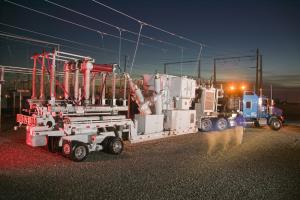Including mobile substations in Strategic Transformer Reserve Program
Joe Donovan is a partner in the Washington, D.C., office of Stradley, Ronon, Stevens & Young, LLP, counseling companies, municipalities and nonprofit organizations in matters relating to regulatory litigation, enforcement, mergers and acquisitions, legislative and regulatory outreach strategies, and general corporate law. He can be reached at jdonovan@stradley.com.
In a remote wilderness of the northern United States near a major interconnection point on the electric grid, shots ring out breaking the frozen silence. It is not white tail deer or moose that are under fire. Rather the bullets rip into metal, tearing apart equipment and sieving oil from both the substation's transformer and its reserve unit mounted next to it.

By the time the last shot is fired, the substation is out of service, impacting the flow of electricity throughout the region. To intensify the impact of the event, similar scenes play out at a number of other substations throughout the region in an unprecedented coordinated attack on our nation's electric infrastructure.
With this potential risk, and dozens of other risks to the substations that an active imagination can conjure, how can we best plan for a quick, flexible and efficient response to secure grid resiliency?
That is the question Congress asked when it passed the Fixing America's Surface Transportation Act, FAST, in December 2015.
Congress has tasked the U.S. Department of Energy, DOE, with organizing a Strategic Transformer Reserve Program, STRP.

